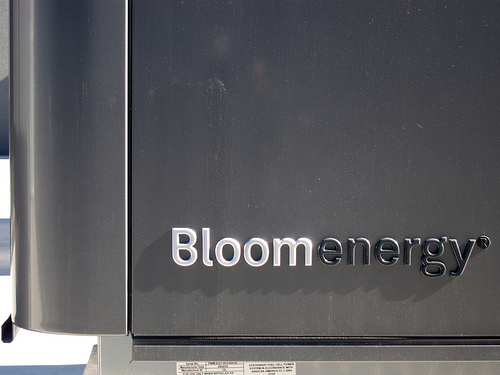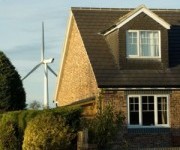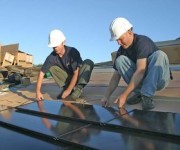distributed energy
-
Is the Bloom Box cheaper than solar?
This is part of a series on distributed renewable energy posted to Grist. It originally appeared on Energy Self-Reliant States, a resource of the Institute for Local Self-Reliance’s New Rules Project. The Bloom Box has received a lot of media attention for its plug-and-play approach to electricity from fuel cells. The 100 kilowatt boxes generate electricity […]
-
FHA PowerSaver Loans – a PACE Replacement?
Late last year, the Federal Housing Administration announced a new PowerSaver loan program to provide financing for home energy efficiency improvements. The program comes on the heels of the downfall of residential Property Assessed Clean Energy (PACE) financing, which allowed homeowners to pay back energy efficiency improvements via long-term property tax payments, as well as […]
-
Distributed renewable generation = big numbers
Distributed renewable energy comes in small bites, but it makes mouthfuls — gigawatts — of renewable energy capacity. Americans tend think big, but it is countries that built small that are hitting big renewable energy targets. Take Germany. In 2009, it installed 3,000 megawatts (MW) of solar PV, more than three times all the solar […]
-
Community wind projects still require financing acrobatics
Wind projects shouldn’t require financial acrobatics.Photo: Chris GawThis is part of a series on distributed renewable energy posted to Grist. It originally appeared on Energy Self-Reliant States, a resource of the Institute for Local Self-Reliance’s New Rules Project. Community wind projects deliver larger economic returns and encounter less local resistance, but a new report released last […]
-
U.S. military sees great value in distributed renewable energy
In Iraq, new distributed renewable energy systems could help the Marines reduce fuel consumption, saving lives and money.
-
Federal solar incentives cost schools ownership opportunity
This is part of a series on distributed renewable energy. It originally appeared on Energy Self-Reliant States, a resource of the Institute for Local Self-Reliance’s New Rules Project. There’s been a fair amount of news about the spread of solar carports in California, highlighting the Milpitas School District’s 14 distributed solar PV arrays. According to a […]
-
Perverse policy makes distributed renewables more expensive
I’ve talked previously about the perversity of using tax credits to incentivize renewable energy production, increasing transaction costs and reducing participation in renewable energy development. But there are other perversities in U.S. state and utility renewable energy policies, especially with upfront rebates and net metering.
-
How can clean electrons compete with dirty electrons?
One of the most fundamental challenges facing clean power is that, to put it simply, electrons are electrons. Power from a solar power plant, once it enters the transmission system, is indistinguishable from coal, nuclear, or natural gas power. To the end consumer, it's all just electricity -- or rather, it's all just lights coming on and dishwashers running. Given that, how can consumers be sold on clean electricity?
-
Concentrating solar thermal power, distributed
Solar thermal power -- or concentrating solar power -- can be done in a distributed fashion.





